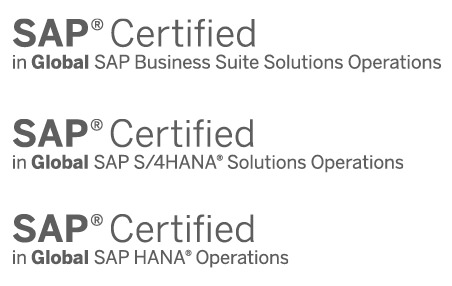The pandemic caused by the coronavirus is a global challenge with consequences at all levels, and technology is playing an essential role in the response to contain it and mitigate its impact by serving as a basis for evolving towards more digital models, in the way we relate, work, entertain ourselves or consume.
Societies and companies are more digitised today than they were a year ago. We see it on a daily basis and studies tell us that many organisations are years ahead in their digital transformation processes. This transition, set as an essential pillar of recovery plans, implies that there is no return to the previous state, but a rethinking of strategies to be more resilient and achieve a more competitive position in the future.
From a challenge often comes an opportunity, and market research firms are convinced that companies that are committed to technological leadership will be the ones that will be better positioned in the market that is currently being redefined.
It is for this reason that in this post we have compiled the emerging priorities of the CIO that are or will be imposed during this period of economic recovery and digital transformation.
The CIO agenda
IDC has identified the areas that CIOs will focus on in the coming years to drive the recovery of their organisations. In that future, as you can see below, efforts to consolidate trends such as distributed work environments, achieving stronger cybersecurity and compliance postures, and investments in infrastructure, platforms and applications that give organisations greater flexibility and resilience are top of mind. These are the issues they will prioritise:
Prediction 1. 65% of CIOs will empower workers with data, artificial intelligence and security to achieve productivity gains. Organisations will be more adaptive and accelerate decision-making processes to deliver the business changes that are needed quickly.
Prediction 2. Cyber risks are the main concern of the agenda, with more and more complex cyber-attacks. Investment will therefore be needed to strengthen corporate security strategies that protect assets as well as customer confidence in the brand.
Prediction 3. By 2023, according to IDC, enterprises will probably be under some financial stress due to the consequences of the pandemic, so technology teams and their leaders will have to work hard to stay agile, and this need will continue to drive cloud migrations.
Prediction 4. A crisis like the current one will cause the majority of CIOs (75%) to become essential to business decision making, as digital infrastructure will be key in this period of business reinvention and redefinition.
Prediction 5. To support secure, distributed work environments, half of IT managers will accelerate robotisation and automation, which will require consideration of how change management will be delivered in the coming years.
Prediction 6. At least until 2023, making their organisations’ digital infrastructure resilient will need to be an obsession for technology departments, who will also need to manage flexible forms of financing to deal with a variety of scenarios.
Prediction 7. There will be a need for effort in the area of customer experience. According to IDC, by 2025, 80% of CIOs, along with business units, will implement intelligent capabilities to detect, learn and predict changes in customer behaviour. This will facilitate the creation of unique experiences that facilitate customer connection and brand loyalty.
Prediction 8. By the same date, six out of ten IT managers will have implemented governance methods for tools developed with low or no coding. Their goal will be to increase the productivity of the IT team and the business as a whole, as well as to generate innovation.
Prediction 9. By 2025, 65% of CIOs will implement ecosystem, application and infrastructure control systems based on interoperability, flexibility, scalability, portability and on-time delivery.
Prediction 10. By 2024, 75% of technology executives will take on new responsibilities related to managing the health and well-being of employees, including managing their location data for these purposes. They will need to ensure their security and that they comply with regulations in this area.
Cloud architectures will provide many of the answers IT leaders need to advance these priorities. In this cloud scenario, Syntax has also analysed the cloud trends that will shape 2021 to help the CIO make the right decisions that will impact the future of their organisation.
If you are looking for a partner for a critical project for your organisation, contact our experts. Read here what IDC says about the project we did for our client Madrileña Red de Gas.



